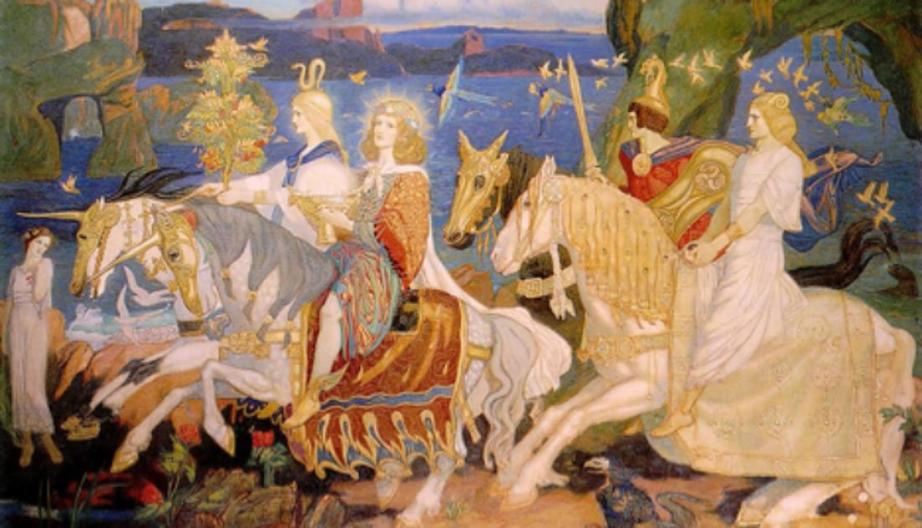Tuatha Dé Dannan, the enchanting predecessors of Irish fairies and elves
Most people do not believe in elves. The little people, along with fairies, banshees, and werewolves, are often thrown into the category of ‘fantasy’ and left to molder unless some video game or children’s book decides to make use of them for commercial purposes.
Whatever you believe to be true, stories of fantastic creatures are present in most ancient cultures, particularly in European regions such as Germany, Scandinavia, and Ireland. Widespread disbelief and discrediting of the mystical folk have rendered serious research into the origins of elves almost nonexistent. However, recent scientific and historical analyses of the folklore of Ireland reveal that elves are not wholly fictional, but actually based on real life beings.
The Etymology of ‘Elf’
First, for clarity, it should be noted that the word ‘elf’ is not indigenous to Ireland. This word derives from a term used in Common Germanic, the ancestor language of modern German, English, and several Scandinavian languages. ‘Elf’ became a label for the Irish fairies when the English began to write about and record Irish folklore.
Originally, ‘elf’ was used to describe all fairies. Over time, the term came to stand for a specific subset of fairies: those that are small and possess supernatural powers. Other common characteristics of elves are the ability to shapeshift or the possession of great wealth. The old Germanic roots of the word made distinctions between male and female elves, as well as good and evil elves. This specificity has been lost and the English term ‘elf’ can apply to any of the above.
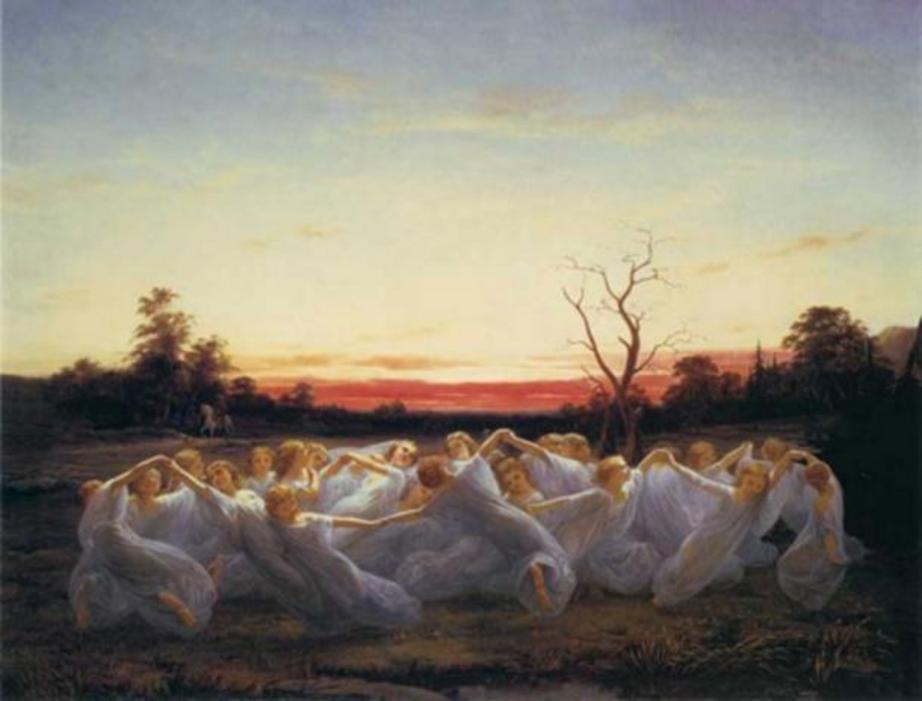
‘Meadow Elves’ (1850) by Nils Blommér. (Public Domain)
Mixing Myth and Fact: The Old ‘Elvish’ Masters of Ireland
According to legend, there were six waves of ‘masters of Ireland’ and each has some connection to the Biblical story of Noah and the Flood (today, it is unclear how much of this is fact and how much fabricated by Medieval Irish monks in order to make the Irish history equally as important as Israel’s). In each of the waves, women play a prominent role, reflecting the unique equality present on the island before its incorporation with the rest of Europe. Scholars today know the most about the final wave of conquerors, the Milesians (sons of Mil, a descendant of Noah), who reached Ireland from Spain in the 4th century BC. These were the Celts. They displaced inhabitants known as the Tuatha Dé Dannan, the progenitors of the Irish fairies.
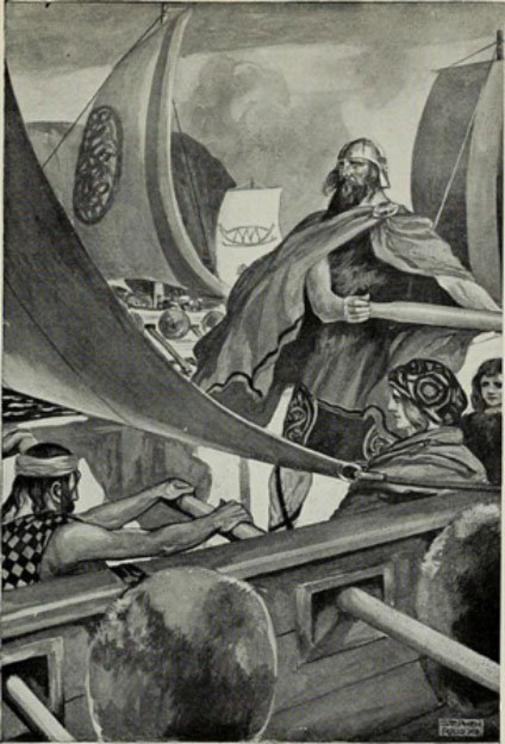
"The Coming of the Sons of Miled", illustration by J. C. Leyendecker in T. W. Rolleston's Myths & Legends of the Celtic Race, 1911. (The Commons) The Danann (pre-Celtic “fairy” people) were overthrown by the invading Milesians.
Originally, the fifth wave of conquerors were known simply as Tuatha Dé (‘People of God’) but this posed a problem for the Irish monks recounting their history because the Israelites were the People of God. So, the early inhabitants of Ireland became the Tuatha Dé Dannan (‘People of the goddess Danu’) after their primary deity.
Another group of settlers was the Fomorians, who will feature in the legends of the Tuatha Dé Dannan and in Celtic myths as giants and sea raiders. Some believe that they were the remnants of a forgotten trading outpost of the African empire of Carthage. The survivors of each successive wave of settlers were enslaved by the Fomorians. This solidified the characterization that the Fomorians were representatives of all that is evil in the world – the bad elves. In recounting the struggles between the Tuatha Dé Dannan (thus, the good elves) and the Fomorians, the former takes on an aspect of semi-divine and the latter an aspect of semi-demonic.
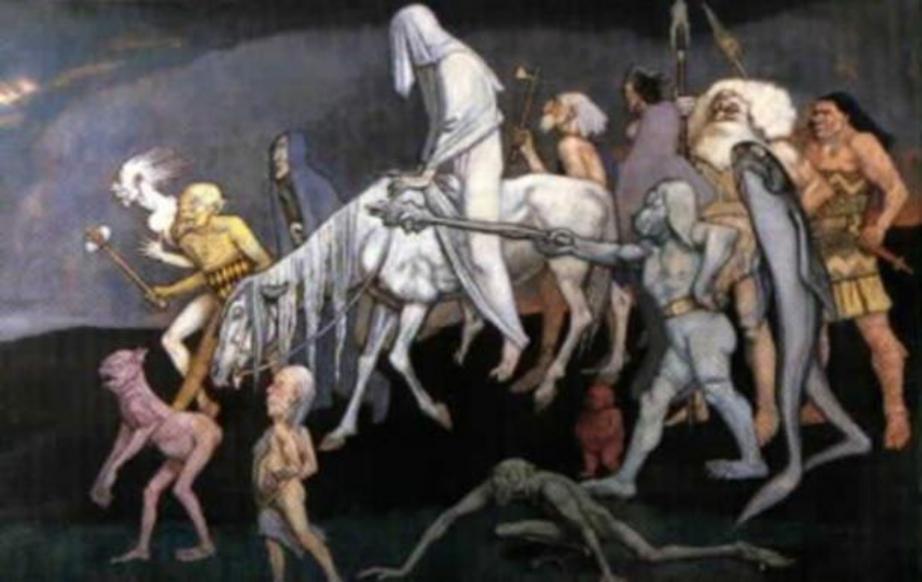
The Fomorians, John Duncan's interpretation of the sea gods - ‘the bad elves’ of Irish mythology. (Public Domain)
It is possible to trace how the actions of each group developed mythic dimensions over time. For instance, when the Tuatha Dé Dannan came to Ireland from the Northern Isles, they burned their ships so that there could be no thought of retreat. This sent up a great cloud of dark smoke. By the time the Lebor Gabála Érenn (The Book of the Taking of Ireland) was compiled in the 11th century, their arrival had been recast as:
They landed with horror, with lofty deed,
in their cloud of mighty combat of spectres,
upon a mountain of Conmaicne of Connacht.
Without distinction to descerning Ireland,
Without ships, a ruthless course
the truth was not known beneath the sky of stars,
whether they were of heaven or of earth.
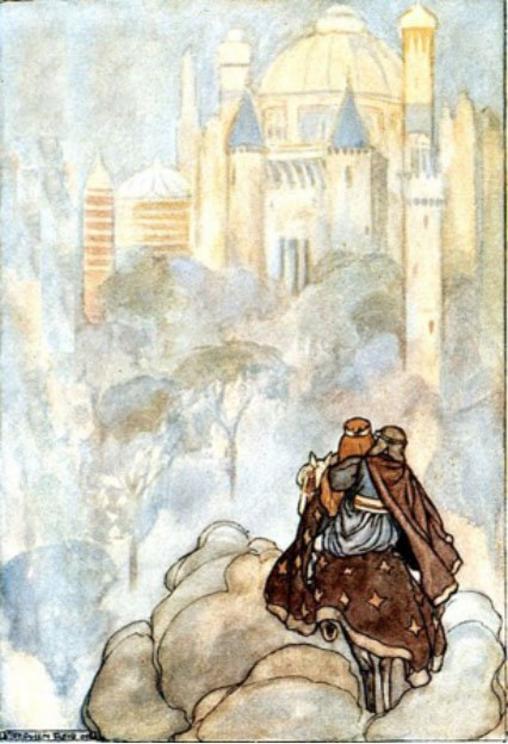
Oisín and Niamh travelling to Tír na nÓg ("Land of the Young" – an otherworld inhabited by the Irish fairy people the Tuatha Dé Dannan), illustration by Stephen Reid in T. W. Rolleston's The High Deeds of Finn (1910). (Public Domain)
The Tuatha Dé Dannan were not gods or goddess (or fairy people) themselves but a druidic race with rare insight into the workings of nature. They were:
“a scientific people who comprehended laws of nature and were able it to operate. Tuatha Dé Dannan had all around knowledge of curative and power properties of plants and used them for treatment of the various diseases, mortal wounds and at commission of spells. They also were very skillful handicraftsmen and musicians, soldiers and poets, and their weapon was considered as the best and modern. Women had almost the same civil rights, as men, and actively participated in all man's affairs, even in war. Quite often they spoke as envoys at negotiations between the conflicting parties, and also sat at councils at conclusion of peace.” (Koltypin, 2013).
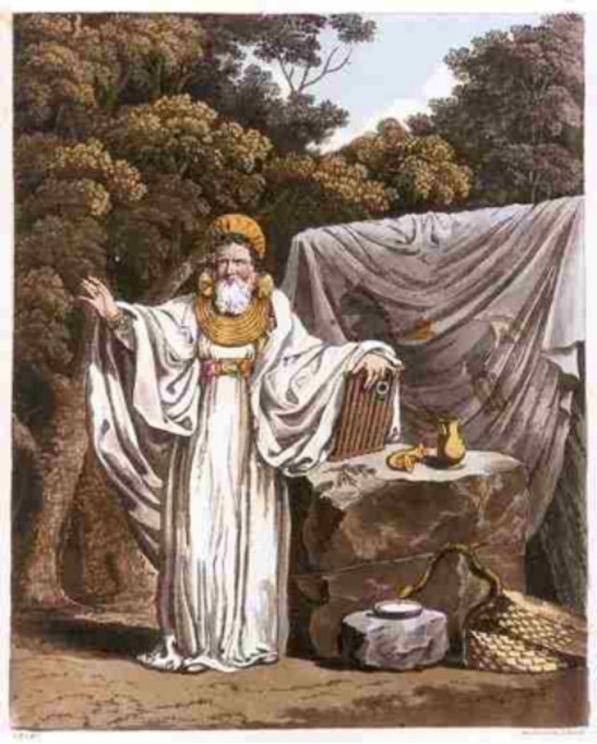
Imaginative illustration of 'An Arch Druid in His Judicial Habit' from "The Costume of the Original Inhabitants of the British Islands" (1815). (Public Domain) The Tuatha Dé Dannan were not gods or goddess (or fairy people) themselves but a druidic race with rare insight into the workings of nature.
Hidden Fairy-Folk
To this day, one can see in Ireland the great barrows and intricately carved tumuli left behind by the pre-Celtic “fairy” people. In addition to their wisdom, the Tuatha Dé Dannan’s divine status was reinforced by their incredible beauty. Tall and slight, the pre-Celtic men and women had “very light skin, delicate features, blue, gray or green eyes and long golden hair which the faultless beauty could make mortal people crazy” (Koltypin, 2013). This is similar to some depictions of elves today.
The story goes that when the Milesians arrived, there was a horrific war.
“When the Danann were overthrown by the invading Milesians (known to modern historians as the Gaels), it’s said that a bargain was struck in good faith once the warring stopped. But the Gaels were cunning, and offered to split the lands of Ireland if they were allowed to stake their claim first. When the Danann agreed, the conquerors chose the land above ground, which then left the gods of old to preside over the lands below. They were forced to depart beyond the mortal world through the Sidhe [the earthworks and barrows scattered throughout Ireland]” (Jillian, 2015).
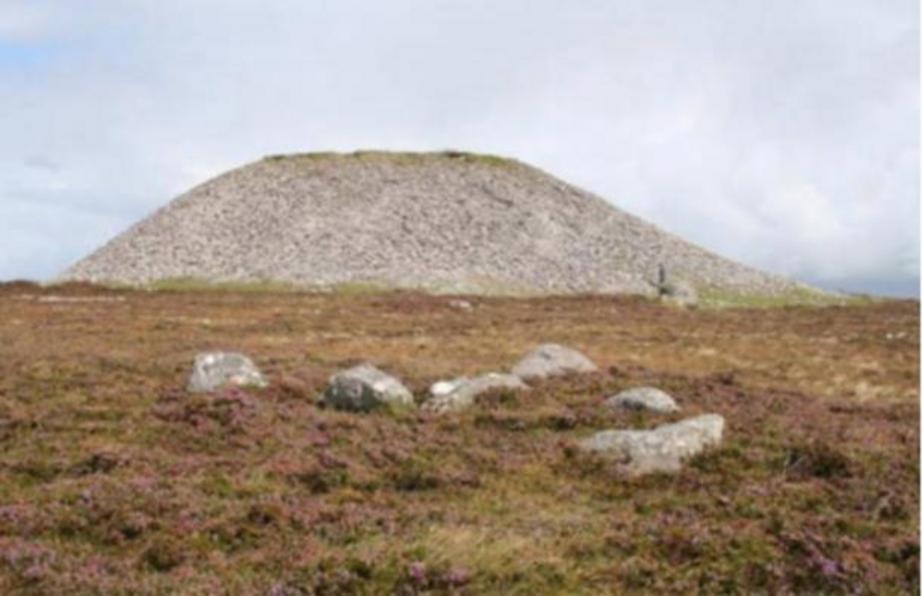
The fairy queen Meadb's cairn at the summit of Knocknarea, Ireland. (CC BY-SA 2.0)
Forced to live out of sight, the mythical Tuatha Dé Dannan, in the form of fairies, continue to pop up in Irish folklore, sometimes to help, sometimes to hinder. In addition to the Tuatha Dé Dannan, they are referred to as the People of the Sidhe and the Little People. In his book, How the Irish Saved Civilization, Thomas Cahill argues “The little people is a euphemism…meant to disguise the speaker’s fear of something unfamiliar and much larger than himself. It is possible that the flickering phenomenon of the little people represents the afterglow of Irish guilt over their exploitation of more artful aborigines” (Cahill, 1995, 80).
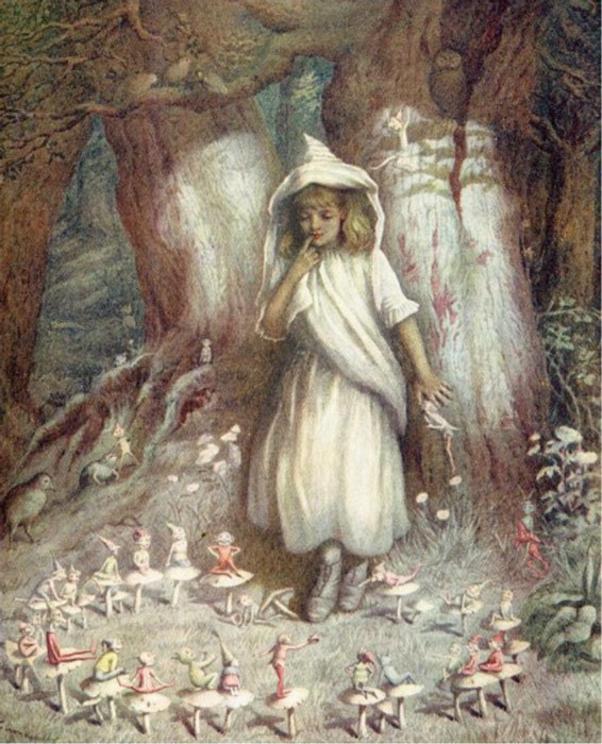
‘The Elf Ring’ (1905) attributed to Kate Greenaway. (Public Domain)
By the time the Christian monks recorded the legends of the Tuatha Dé Dannan, they seemed like divine creatures; however, there could be no god other than the Christian God in the eyes of the monks. So, the pre-Celtic inhabitants became fairies and later on, elves. In reality, the pre-Celtic peoples that survived the Celtic conquest probably intermingled and intermarried with the Celts, creating the Irish people we know today.
Top Image: Riders of the Sidhe. (1911) John Duncan. This is an imaginary representation of what the famous Irish ‘fairy people’ the Tuatha Dé Dannan, may have looked like. Source: Public Domain

